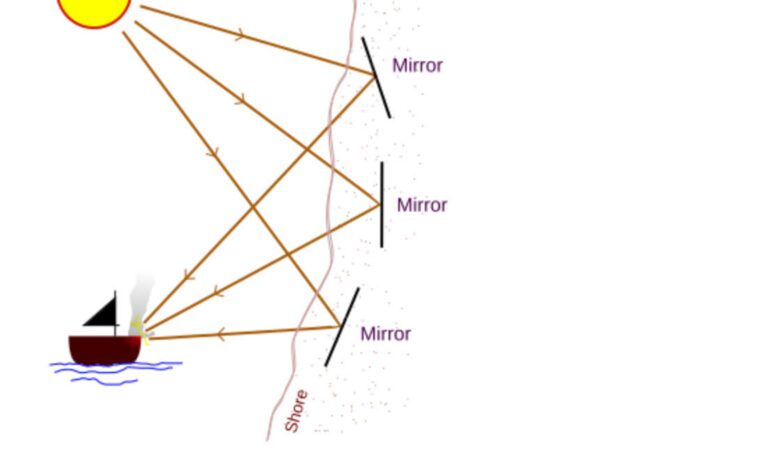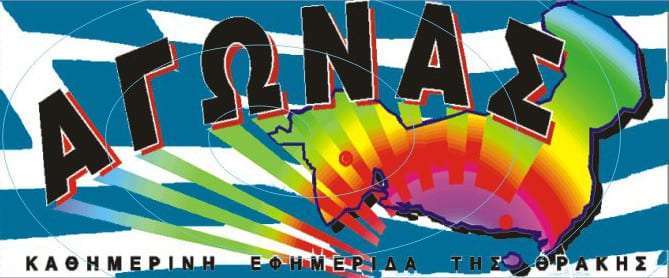
*Γράφει ο Δημήτρης Βόγγολης, Πρόεδρος ΙΗΑ
Η ακτίνα φωτός του Αρχιμήδη: Θεωρείται πως χρησιμοποιήθηκε κατά την πολιορκία ων Συρακουσών- εστίαζε τις ακτίνες του Ήλιου, βάζοντας φωτιά στα ρωμαϊκά πλοία (ένα από τα αμυντικά όπλα του Αρχιμήδη, όπως και η «αρπάγη» του για την ανατροπή εχθρικών πλοίων). Η «επικύρωση» της βιωσιμότητάς ή η «κατάρριψή» του έχει αποτελέσει αντικείμενο επιστημονικής «κόντρας», μεταξύ του ΜΙΤ και των τηλεοπτικών «Mythbusters». Αξίζει να σημειωθεί πως το 2010 προκάλεσε τους «Mythbusters» ξανά ο πρόεδρος των ΗΠΑ, Μπαράκ Ομπάμα. Το συμπέρασμα στο οποίο κατέληξαν αυτή τη φορά ήταν πως ίσως επρόκειτο για όπλο που «τύφλωνε» τους Ρωμαίους.
Archimedes’ Ray of Light: Considered to have been used during the siege of Syracuse – it focused the Sun’s rays, setting fire to Roman ships (one of Archimedes’ defensive weapons, as was his “grab” for overturning enemy ships). The “validation” of sustainability or its “debunking” has been the subject of a scientific “feud”, between MIT and TV’s “Mythbusters”. It is worth noting that in 2010 the “Mythbusters” were challenged again by the US president, Barack Obama. The conclusion they reached this time was that maybe it was a weapon that “blinded” the Romans.

Archimedes’ heat ray
Archimedes may have used mirrors collaborating as a parabolic reflector to burn ships attacking Syracuse/
Archimedes’ heat ray is a device that is purported to have been used to burn attacking Roman ships during the Siege of Syracuse (c. 213–212 BC). It does not appear in the surviving works of Archimedes and is described by historians writing many years after the siege.
Historical accounts of the heat ray
The 2nd century AD author Lucian wrote that Archimedes destroyed enemy ships with fire during the Siege of Syracuse. Seven centuries later,Anthemius of Trelles mentions burning glasses as Archimedes’ weapon. The device was used to focus sunlight onto approaching ships, causing them to catch fire.[1]
*Δημήτρης Βόγγολης, Πρόεδρος και Δάσκαλος του ΙΗΑ
Τα άρθρα που δημοσιεύονται στην ιστοσελίδα του ΙΗΑ εκφράζουν αποκλειστικά τους συγγραφείς – μέλη του ΙΗΑ. Η ιστοσελίδα του ΙΗΑ δεν λογοκρίνει, ούτε επεμβαίνει σε άρθρα – κείμενα των μελών του ΙΗΑ





